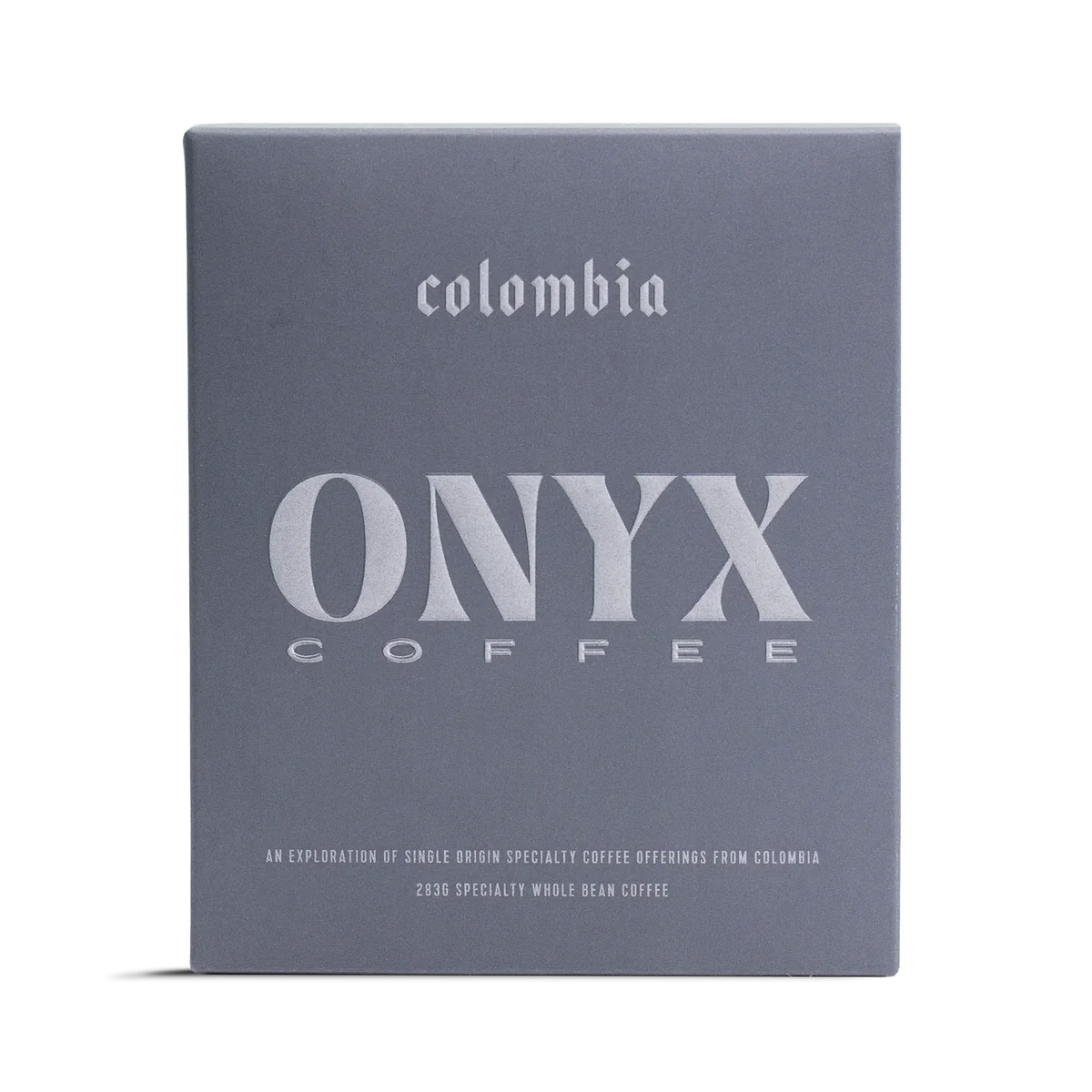ONYX COFFEE LAB
ONYX - Colombia Isaura Cuchumbe
ONYX - Colombia Isaura Cuchumbe
Couldn't load pickup availability
| Tasting Notes: | Lime, Toasted Almond, Baker's Chocolate, Orange |
| Origin: | Colombia |
| Process: | Washed |
| Variety: | Chiroso |
| Roast Date: | October 2, 2024 |
ONYX Coffee Lab is located in Rogers, United State
From ONYX
Isaura, a 49-year-old coffee producer, bought her own farm eleven years ago with her husband Neyid and their five children. This high-quality coffee is part of Pergamino's Allied Producer Program, which aids us in paying premium prices for exceptional micro-lots, significantly benefiting producers in the region.
The name Pergamino coffee has been synonymous with high-quality Colombian coffee for years. We’ve long partnered with Pedro Echavarría to purchase coffees from their family estates, and over the last four years we’ve partnered with Pergamino on the Allied Producer Program, which we’ve utilized to source coffees for not only single-origin usage but also for our staple blends when washed coffees are needed. Through the network of the Allied Producer Program, we’ve sourced excellent full container lots for our blends, and while cupping through these coffees we find micro-lots that are higher quality: with marked delicate florals and higher acidity, which we separate out to feature as a single origin offering. We pay 10-20% more for these lots as they're separated out from the larger regional blends, yielding the producer anywhere from two to three times the C-Market price. This lot is one of many lots we separated during our last visit to Pergamino. This lot is produced by Isaura, who is 49 years old and lives with her husband Neyid, who is also a producer ally with Pergamino. Together they have 5 children, who work with coffee as well. Eleven years ago they bought their own farm, where Isaura has planted corn, beans, bananas, and cassava, all intercropped with the coffee. Isaura also grows flowers on the farm as a hobby.
WASHED PROCESSED COFFEES
The washed process began less so with the intention of influencing flavor, and more so with the intent of creating an easy-to-dry ubiquitous product that will reduce risk. This process has maintained popularity for its influence on the final cup- coffees processed as ‘washed’ are typically more in line with what consumers expect coffee to taste like. Washed process coffees are celebrated for their high perceived clarity, as well as for a balance in fruit characteristics and acidity, but it is not always that simple. The process of removing the outer layer of fruit once a coffee cherry is, and has been, fairly simple. The post-harvest processing begins the moment the coffee cherries are picked. The cherries are usually inspected, with an initial quick round of hand-sorting, separating the defective coffees before placing them into the hopper of the machine. There are various methods used to remove the outer layer of mucilage from the cherries, the most common machines utilize friction to remove the thin layer of fruit skin from the cherry, followed by a formal fermentation phase meant to break down the sticky fruit layer. During this fermentation, a microbial de-mucilagation takes place, which allows the outer fruit and pectin layer to break down, making the coffee easier to dry. This fermentation process has a wild amount of variability depending on the facility, preferences of the producer, and cultural practice. Additions of water as lubrication through the machine are made most of the time, with an optional underwater fermentation. (Some forgo this, choosing to ferment dry.) Typical times for this post-depulp fermentation are 12-36 hours. This phase also crucially alters the organic acids within the coffee, as sugars and organic acids are transformed, with the best-washed coffees maintaining their complex fruit esters. Once the formal fermentation time is complete, the parchment-sheathed seeds are emptied into some type of washing channel, where they are agitated with rakes or paddles to remove the last of the fruit layer. During this step, the water is refreshed to ensure its capability of separating the fruit layer from the seed. Once the washing is complete, the coffee is taken to some type of drying facility to prepare it for exportation and storage.
While the terms we use to describe specialty coffee processing have stayed static, the methods used for post-harvest processing have adapted to not only now solve the problem of removing the outer sticky layer of fruit from the seed, but many producers now see this as an opportunity to influence the final taste profile of the cup. Seeing this final cup as malleable has led producers to use post-harvest processing to influence flavor through the control of variables. Outside of the well-known variable of the level of fruit left in contact with the seed over the drying, there are now a whole host of data points to monitor, even within the ubiquitous description of ‘washed processed.’ There are levels of fermentation, as we assume the level of fruit left on within this washed description is fixed. (at or near zero, after depulp, which we will discuss later.) The variables adjusted to add value while transforming the final cup are as follows: time, environment, and additives. Environment and time are closely tied, as certain fermentations will have a greater effect as the temperature increases in the given environments. Some producers have now taken on a less-than-passive approach when it comes to the environment, choosing to allow oxidation to take place, or by restricting the contact of oxygen to the seeds. (What we in the industry incorrectly call “anaerobic fermentation.) This variability in the environment is also sometimes coupled with an addition of yeast, fruit, spices, or even organic acids as inoculants or catalysts for reactions. As the world of post-harvest processing continues to shift and innovate, we strive to better understand and articulate the way the final cup has been shaped with better descriptors for the process.




